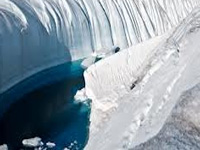Arctic climate change update 2019
New observations confirm continued rapid warming in the Arctic, driving many of the changes underway in the region, including loss of sea ice and glacier coverage, as well as changes in terrestrial and
New observations confirm continued rapid warming in the Arctic, driving many of the changes underway in the region, including loss of sea ice and glacier coverage, as well as changes in terrestrial and

Earth has been shedding sea ice at an average annual rate of 35,000 square kilometres since 1979, a new NASA study has found. “Even though Antarctic sea ice reached a new record maximum this past September,
<p>Warming occurs particularly fast in the Arctic and exerts profound effects on arctic ecosystems. Sea ice-associated ecosystems are projected to decline but reduced arctic sea ice cover also increases
<p>When sea ice forms it scavenges and concentrates particulates from the water column, which then become trapped until the ice melts. In recent years, melting has led to record lows in Arctic Sea ice
Ocean surface waves (sea and swell) are generated by winds blowing over a distance (fetch) for a duration of time. In the Arctic Ocean, fetch varies seasonally from essentially zero in winter to hundreds
Earth’s ability to reflect sunlight is diminishing due to drastic melting of sea ice in Arctic Ocean, a new study says. The researchers from Scripps Institution of Oceanography, at the University of
Last year, 2013, was tied with 2003 as the fourth warmest year since records began in 1880, according to the US government's National Oceanic and Atmospheric Administration (NOAA). For the 37th consecutive
We investigated the impact of radiosonde data from the ice-free Arctic Ocean obtained by the Japanese R/V Mirai during a cruise in the fall of 2010 on the AFES-LETKF experimental ensemble reanalysis version
The amount of sea ice in the Arctic has fallen to the lowest level on record, a confirmation of the drastic warming in the region. Satellites tracking the extent of the sea ice found over the weekend that
Environmental scientists have known that high levels of the toxic element, mercury, have been accumulating in the Arctic Ocean for some time. It was believed to be mostly caused by atmospheric sources
The ice has not recovered from a record low in 2007 – ice-free summers could soon become a regular feature across most of the Arctic Ocean.